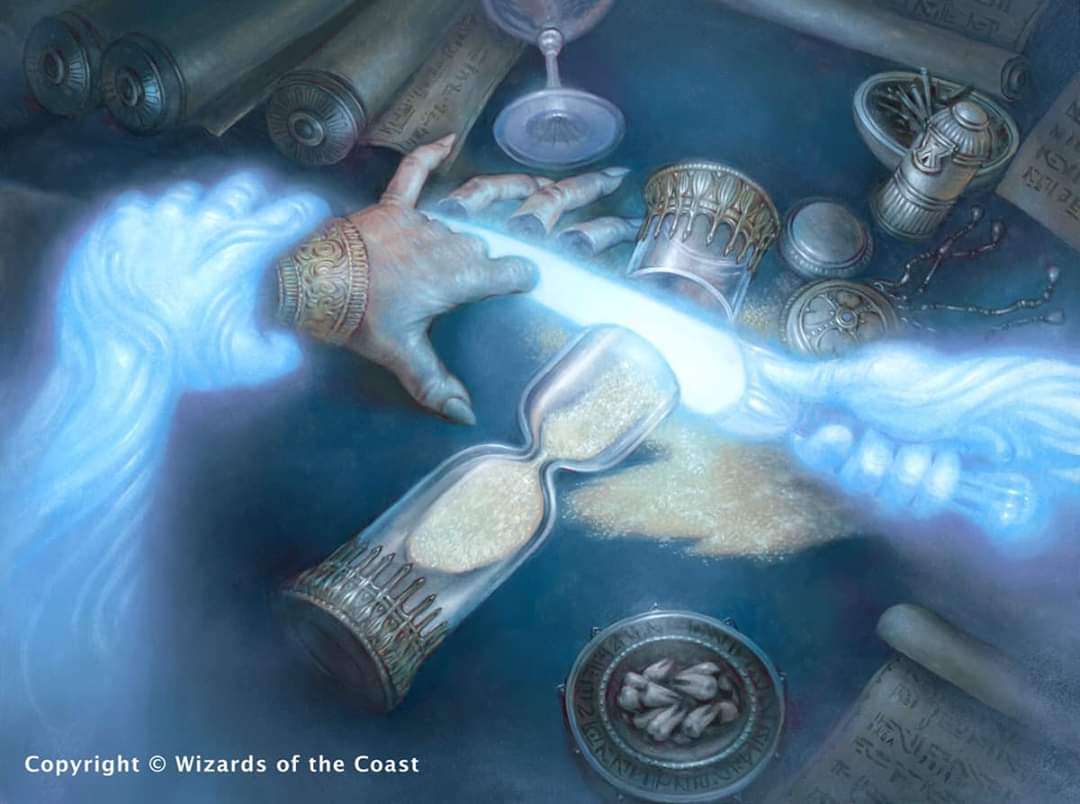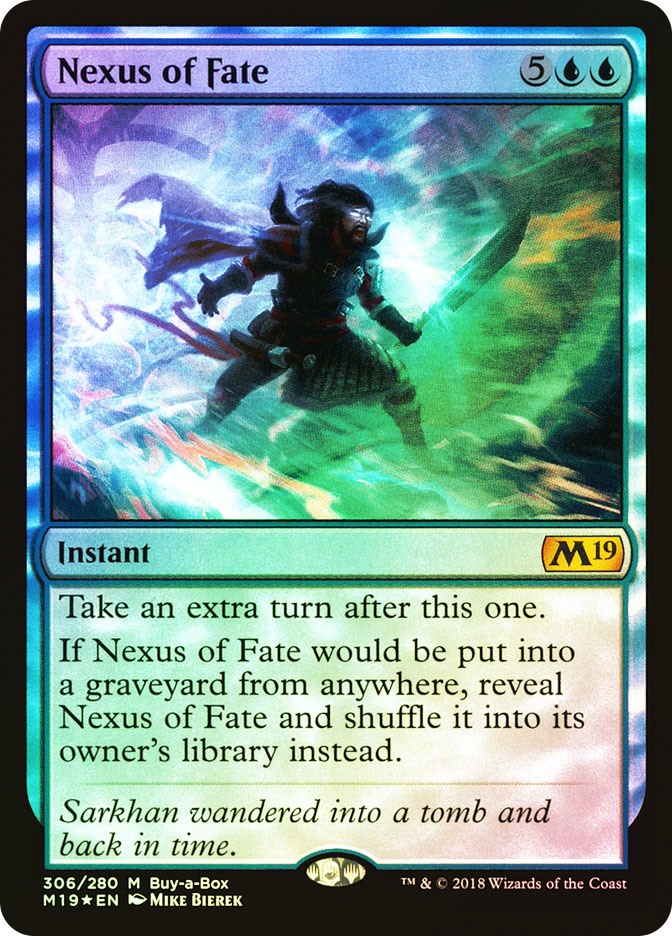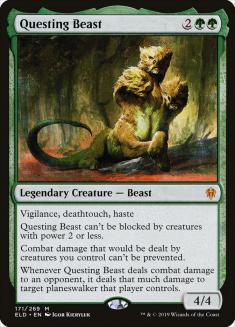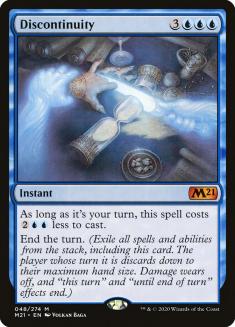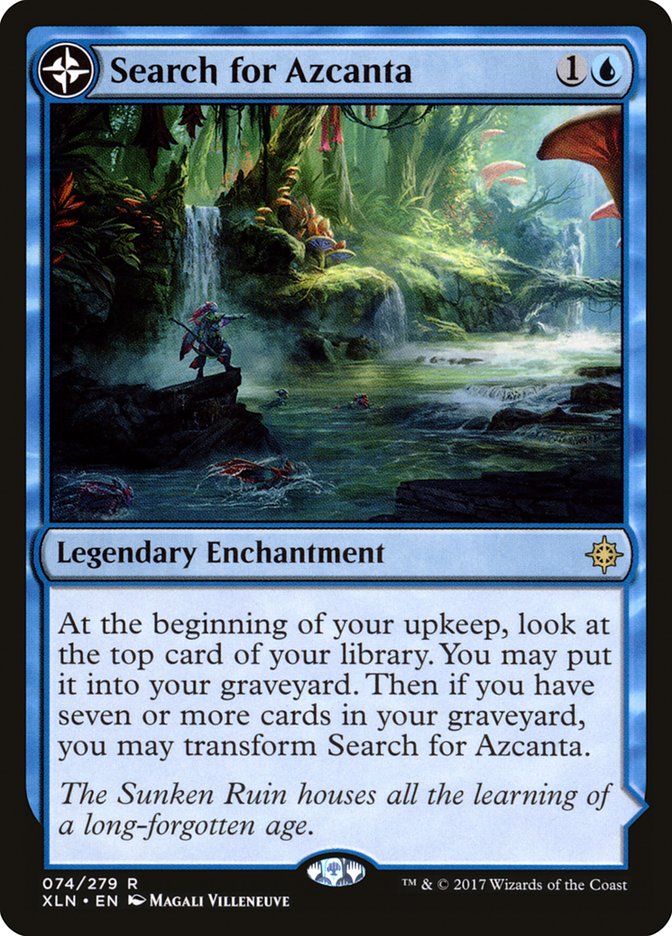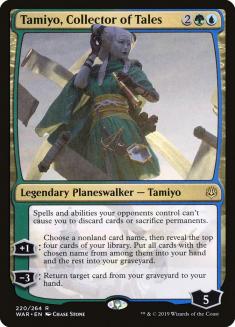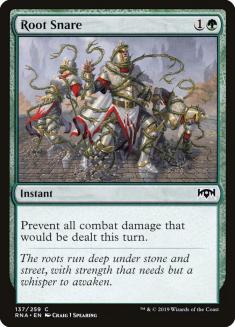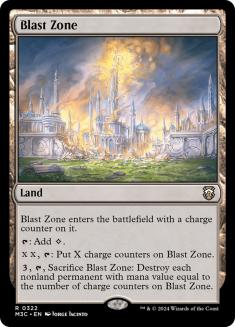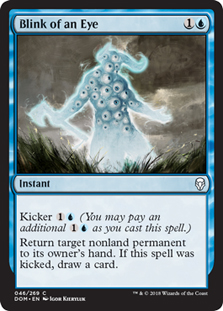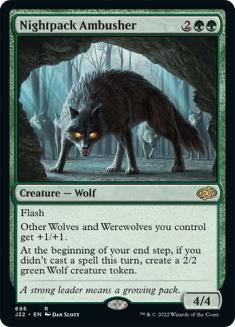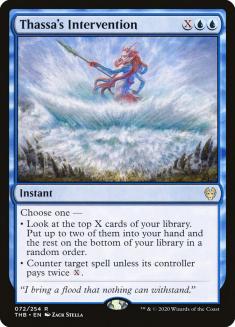It’s been a while, but it’s time to write my favorite style of article: “Play X or be wrong.”
This kind of article is really only appropriate when there’s a deck that’s head and shoulders above the rest of its format and there isn’t a guide for the deck yet. Previous examples include Ironworks in Modern and Four-Color Rally in its Standard format.
Now? It’s Simic Nexus in Historic.
After beating the Historic Simic Nexus drum just about a month ago, the deck received a brand-new toy in Discontinuity. For the folks here for the decklist:
Creatures (4)
Planeswalkers (3)
Lands (28)
Spells (25)
- 2 Opt
- 2 Search for Azcanta
- 2 Blink of an Eye
- 4 Nexus of Fate
- 4 Growth Spiral
- 4 Wilderness Reclamation
- 3 Thassa's Intervention
- 4 Discontinuity
Sideboard

The base-level information on why this deck is built the way it is can be found in the aforementioned write-up on Simic Nexus in Historic. There are certainly some changes to the deck, however, that are worth examining.
Upgrading
Whenever introducing new cards to a deck, the question to ask is, “What problem is this fixing?” Cards don’t end up in a deck by accident — it’s with a plan in mind, whether progressing the core gameplan of the deck or reacting to an opposing one.
Before Discontinuity, Nexus of Fate decks were forced to play some number of Root Snare in order to bridge the gap to the infinite-turns phase of the game against aggressive creature strategies. In the last couple of years, that hasn’t exactly been as reliable as it used to be, with two main offenders springing to mind:
Bonecrusher Giant and Questing Beast are strong enough cards in their own right that the “Damage can’t be prevented” trinket text of each keeps them out of “niche hate card” territory. Instead, they’re mainstays of the format, used as efficient value threats in their respective colors, providing their own forms of proactive value on a card.
This made such decks natural foils to Simic Nexus. They could adequately pressure the deck and slam the door shut during the developmental stages of the game.
Not anymore.
With Discontinuity, it’s possible —easy, even — to cheat an Uro onto the battlefield on Turn 3. Simply casting a Discontinuity with the sacrifice trigger on the stack (after the Explore trigger has resolved, of course) keeps the 6/6 on the battlefield way ahead of schedule. This is a serious problem for traditional aggressive strategies.
Before Discontinuity existed, players had to invest some amount of resources and mana into putting an Uro onto the battlefield. Now, that isn’t the case. With Discontinuity having an effect that plays well with a deck that plans to take infinite turns on its face, loading up on it is natural. This incentivizes an increased number of Uros in the deck, an easy sell in a deck that wants to put extra lands onto the battlefield as it is.
Having a higher density of Growth Spiral effects, as well as more natural ways to combat aggressive strategies that proactive work towards Nexus’s goals, means that Root Snare is no longer a necessity.
Before Discontinuity, Root Snare was already on the chopping block. It wasn’t very good against most grindy decks and Teferi, Time Raveler completely shut it down. Now it’s just a sideboard card for the creature decks.
Both pieces of the Uro / Discontinuity combo being cards the deck would already be interested in playing, without their own interaction, allows for a more streamlined maindeck and more focused plans.
I’m the least confident in Ugin, the Spirit Dragon, but it continually earns its keep. With all of the ramp in the deck, a curve-topper that actually impacts the battlefield is a nice card to have access to. The amount of selection afforded via Search for Azcanta; the cantrips; Tamiyo, Collector of Tales; and Thassa’s Intervention means that it can be found in the matchups where it’s important. Having a single copy infrequently will completely ruin the deck while it’s trying to go off, yet can completely swing a game when its effect is necessary.
Ugin is best against the planeswalker-heavy decks that try to lock Simic Nexus out with a pile of Narset, Parter of Veils; Teferi, Time Raveler; Elspeth Conquers Death; and so on. There are also some game states that make it impossible for infinite Uro attacks to actually win a game (indestructible Nissa, Who Shakes the World lands are the first example that comes to mind). Having one other card that can literally win the game on a different axis is a nice ace in the hole.
Matchups
The exact configurations for sideboarding will vary against the specifics of what cards the opponent is playing, what with Historic being a developing format and all. What’s mostly important is understanding the desired end-game. Simic Nexus can go over the top of almost everything, and figuring out the details of how to make that happen is the trick to winning sideboard games.
VS Land Decks
Out:
In:
“Land decks” is the shorthand for the pile-of-lands-and-Golos decks featuring some combination of Field of the Dead and Maze’s End. This matchup is one of the reasons to play Simic Nexus. Outside of Teferi, Time Raveler, they don’t really have any meaningful ways of interacting outside of a couple of counterspells, and struggle to put up a real clock.
Most of the cards being cut are in respect to Teferi’s efficacy against them, and a conscious effort to minimize his impact.
Blast Zone is going to be your best friend against Teferi. The trick is slipping it through Field of Ruin and Ghost Quarter. Try and use it in conjunction with Wilderness Reclamation to have it destroy Teferi the turn it enters the battlefield while still operating under his static ability.
The fact that so many decks are high on Mystical Dispute right now over something like Negate is exploitable. Mystical Dispute is certainly undercosted for the effect it provides, but in a deck that ramps as effectively as Simic Nexus, it isn’t particularly difficult to simply play around Mana Leak for most of the game. They aren’t going to apply much pressure in the early turns. This means that it isn’t particularly difficult to pick good fights, rather than being priced into bad ones.
Blink of an Eye does a ton of work in this matchup. It’s been bouncing Teferi, Time Raveler for Wilderness Reclamation for a while, but being able to save its caster’s permanents from removal and the like is a huge upside.
Bringing this up here is relevant because, on its face, it’s the card with the lowest power level in the deck. This makes it “feel” like it should come out in more matchups than it actually does. Outside of decks like Sultai Control, where there aren’t relevant permanents to be bouncing and they play a ton of hand disruption, Blink of an Eye can be cashed in for a card and/or a reasonable tempo swing.
With decks like Simic Nexus, redundancy can make it difficult to sideboard or figure out what cards to completely cut, but not defaulting to lazier card evaluations is an important step in sideboarding. Sometimes, this means doing the unintuitive:
VS Simic Nexus
Out:
In:
This plan is taking a page out of Standard Temur Reclamation’s book. Rather than simply hoping to turbo out a combo sooner than the opponent, the plan here is to opt out of the fight entirely. Becoming a Simic Flash deck doesn’t actually require a ton of countermagic when the opponent doesn’t have a ton of relevant spells to counter. Developing a Nightpack Ambusher or large flying Shark while playing a tempo game doesn’t take that long to close, and the combo kill is incredibly mana-intensive.
This plan is a result of realizing that most of the worst cards in the mirror are the actual combo pieces, largely in part because the reactive tools that people are playing are mana-efficient answers that punish expensive spells. Subverting the traditional approach to the matchup is a great way to get ahead in a way that feels natural.
VS Tempered Steel
Out:
In:
One of the surprise aggro decks of the format, Tempered Steel is the matchup where Root Snare is at its best.
Having a virtual Time Walk that Tamiyo, Collector of Tales can repeatedly rebuy goes a long way to bridging to the comboing portion of the game. Reclamation-fueled Shark Typhoon tokens are a great way to take down a medium- to large-sized Stonecoil Serpent. They also make for reasonable blockers in the mid-game. Don’t undervalue hardcasting it either.
Blast Zone is best saved for hateful permanents in the matchup, like Deafening Silence and Thalia, Guardian of Thraben. There’s temptation to use it to stymie aggression, but without a backup Blast Zone, it’s an easy way to get clowned by completely beatable cards.
Think of it this way: Root Snare, Discontinuity, and Uro provide more natural answers to pressure. Blast Zone being flexible means that its job will change based on the matchup-specific holes in the gameplan. Allocate it to permanents that make it harder to win rather than simply gaining life.
Against aggressive strategies, Thassa’s Intervention is the first card on the chopping block. It’s incredibly inefficient as a counterspell, and sinking mana into wheel-spinning is a tough sell when aggro decks become as optimized as they are in older formats.
Despite being great against most aggressive creature decks that lack reach, Ugin’s minus ability doesn’t actually exile creatures from this deck, so it gets the axe here.
Shaving the first copy of Nexus of Fate will be fine in matchups where Root Snare is a key player. That’s because Root Snare acts as its own Time Warp. On top of that, Discontinuity keeping Uro on the battlefield is absolutely backbreaking enough that not all games will be won on the back of comboing off. Sometimes an early Uro will just overpower Gingerbrute and friends.
VS Gruul Aggro
Out:
In:
This is an aggro deck where Root Snare isn’t at its best. Because of Questing Beast and Bonecrusher Giant, Root Snare needs to be fired off when the coast is clear and when it will simply add an extra turn to the opponent’s clock.
Mulligan aggressively in this matchup. The Uro / Discontinuity combo is backbreaking here and will win a game by itself.
VS Bant Midrange
Out:
In:
Tagging problematic permanents is the name of the game here. Bant Midrange isn’t that different from the Bant-based Ikoria Standard deck, so the play patterns here aren’t that different from anybody who’s played Temur Reclamation. The difference is that Simic Nexus is capable of punking the opponent out early, and Ugin is great at catching up.
Uro is a card to shave in matchups where the body is easily checked, and its role will be more similar to the “turn leftovers into kill conditions” flavor it had pre-Discontinuity.
VS Sultai Midrange
Out:
In:
There’s a key difference between the approach to this Simic-based midrange deck and the last one: it’s possible to beat Sultai without comboing. That creates a dynamic that allows for Nightpack Ambusher and Shark Typhoon to punk Sultai Midrange out of a game where they wasted their time on something like Unmoored Ego.
Against a deck like Bant Midrange, Nightpack Ambusher isn’t going to line up well against Teferi, Time Raveler and Elspeth Conquers Death. On the other hand, it’s perfectly serviceable against an archetype that is still trying to make Jadelight Ranger happen in 2020.
Expect Nexus of Fate to be taken out of the deck with Unmoored Ego and plan accordingly.
Prioritize using Tamiyo, Collector of Tales as a value card in these matchups, rather than blindly trying to enable the combo. In a variety of matchups I find myself simply firing off Tamiyo’s second activated ability on something like Opt or Thassa’s Intervention for the sake of accruing card advantage. This deck can absolutely grind, and it isn’t hard to come out on top when the opponent is forced to bring in hate for a combo we don’t have to lean on anymore.

